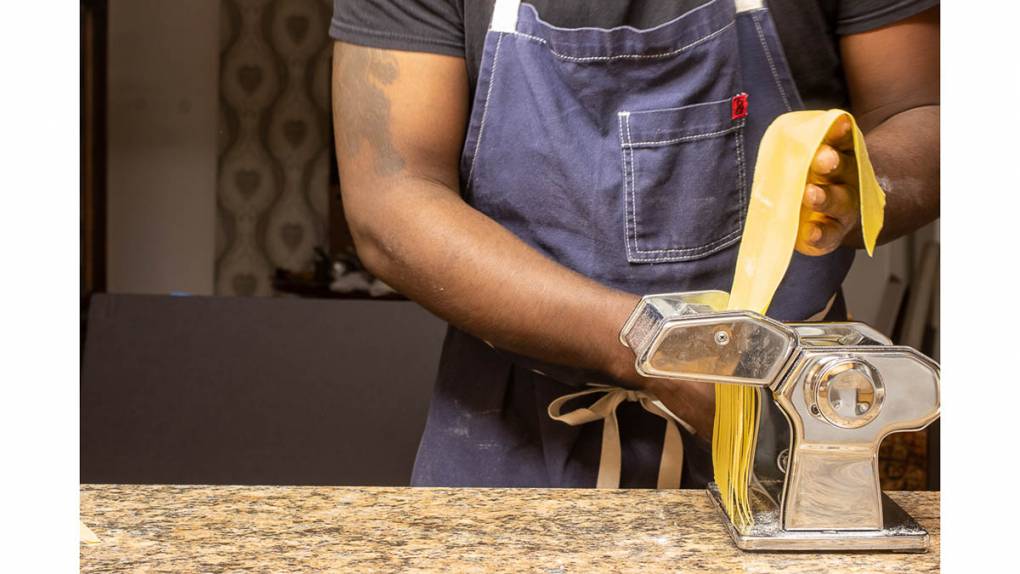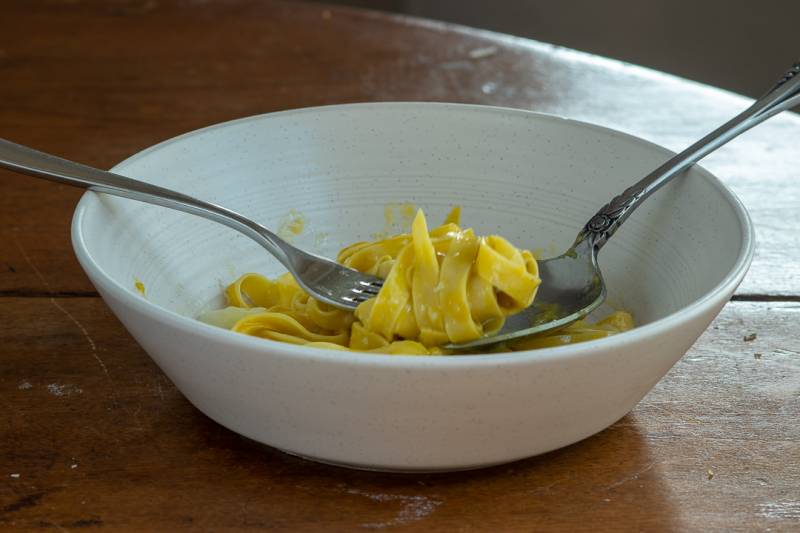I was a biochemist before becoming a chef. So I write this as a skeptical scientist: A bowl of pasta has an almost magical quality. Hidden in plain sight are layers of flavor, technique, thoughtfulness, science, exploration and love that reveal who we are as cooks.
Making fresh pasta can feel like an intimidating task. Most of us (including this pro) have experienced the awful frustration of fresh pasta gone awry. In fact, the worst night of my culinary career was punctuated by a failed pasta course ruined by a dried, cracked and unsalvageable egg pasta dough. As a result of that public failure, I realized that I had to learn more about the science of pasta1.
So, I share my knowledge and experience from a place of great humility.
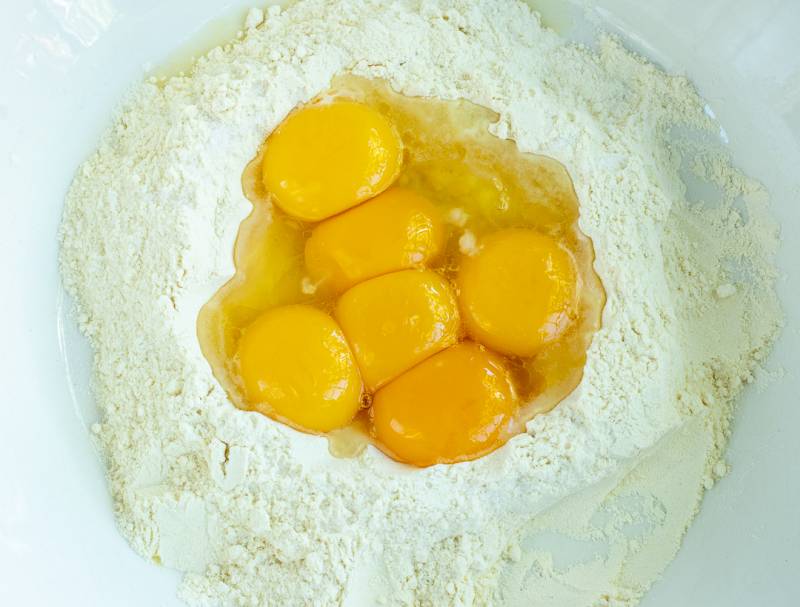
The transformation of flour2 and eggs into a noodle begins with the thoughtful development of gluten. What we think of gluten is a mixture of two protein groups, gliadins and glutenins. Each contribute different but complementary chemical properties to the strength of the pasta dough.
Gliadins provide viscosity and increased extensibility (the stretch of the dough). Glutenins gives the dough elasticity (the ability to return to its original shape after stretching).
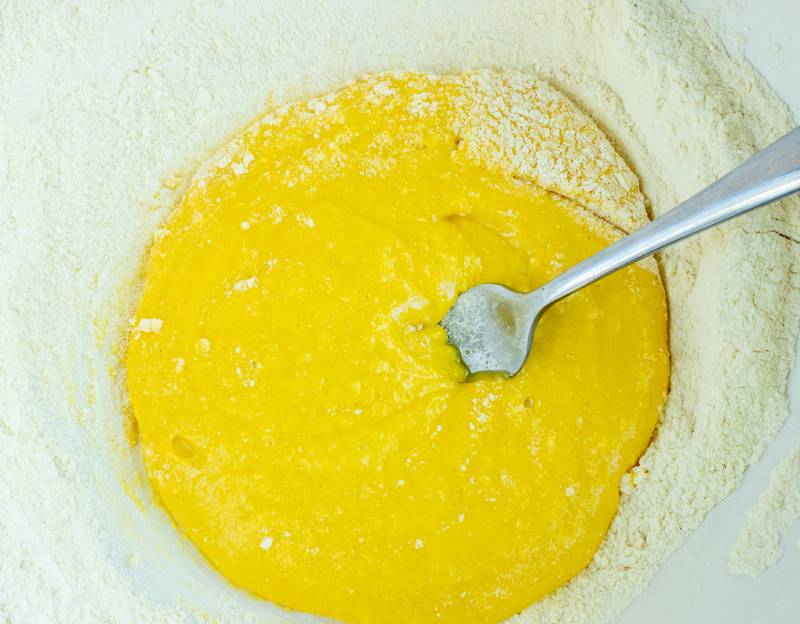
To fully exploit the properties of the gluten proteins and the egg’s chemistry, slowly incorporate the flour into the eggs3. I use a fork and pretend I am making a French omelet. After the dough takes on a “Play-Doh” appearance, knead it. The natural rhythm of folding and pushing the dough increases the probability that the gluten proteins will interact with each other and with the ovalbumin protein from the egg. When exposed to the oxidative environment of ambient air, the sulfur containing cysteine amino acids in the gluten and egg ovalbumin protein form disulfide bonds with each other4. These interactions are the basis of the gluten network characteristic of pasta.
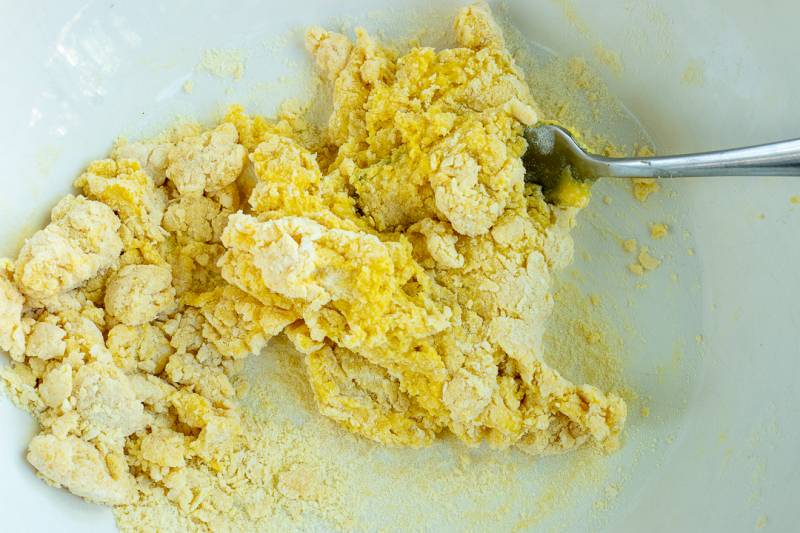
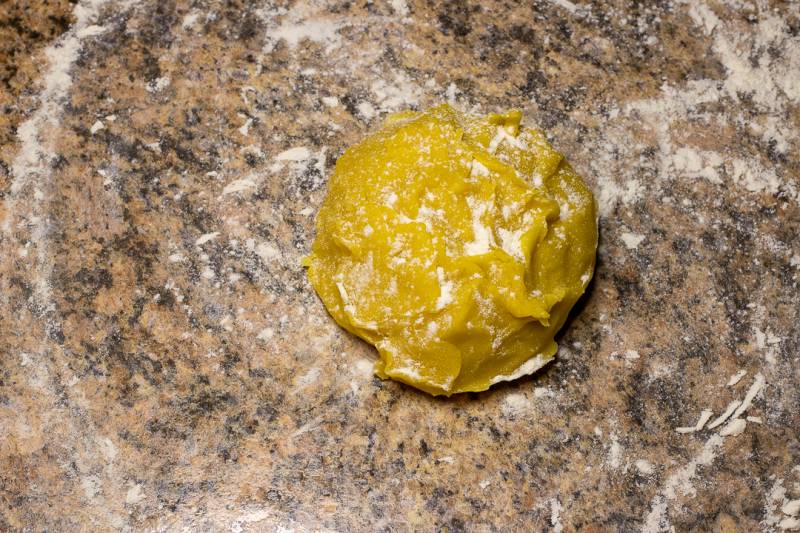
As the dough forms a stable but slight dry looking ball, vacuum seal it in a large bag5. This step may seem, unnecessary especially when you consider people have crafted amazing handmade noodle for hundreds of years, but vacuum sealing enhances many of the dough’s chemical and physical characteristics. First, by decreasing the surface tension associated with air, vacuum sealing promotes even and more efficient hydration of the flour granules than kneading alone.
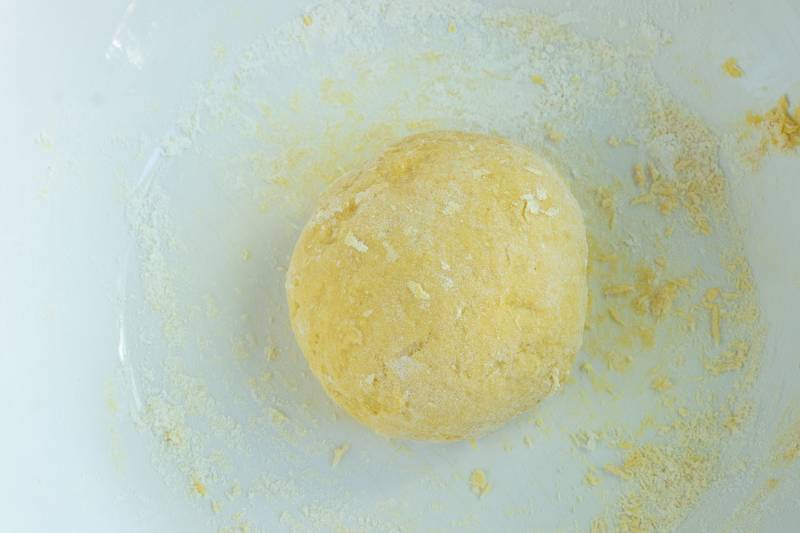
Second, the dough’s strength is increased by removing the small air bubbles trapped in the dough. Third, the oxidation of egg yolk’s carotenoids (lycopene, β‐carotene, lutein and vitamin A) is slowed thereby maintaining the dough’s deep golden hue for a longer period of time. And lastly, I really love the additional layers of sheen and silkiness vacuum sealing adds to the final pasta noodle.
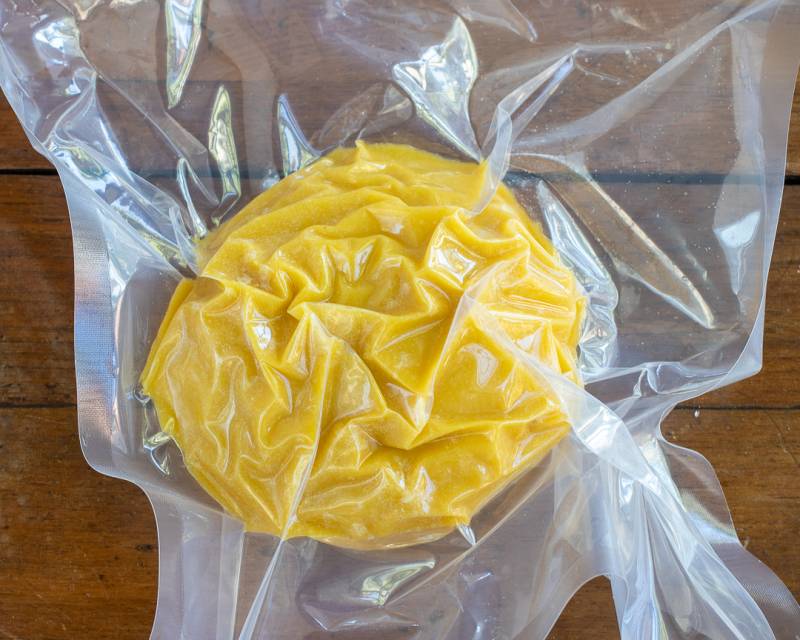
At this point the interlocked gluten and ovalbumin proteins are distributed randomly throughout dough. Rolling out the dough, folding and gradual thinning gives order and direction to the egg-fortified gluten network. If done properly, you can see and feel the rows of gluten form on a smooth silky elastic sheet of dough as it glides over your hands. The science behind an egg noodle is beautiful.
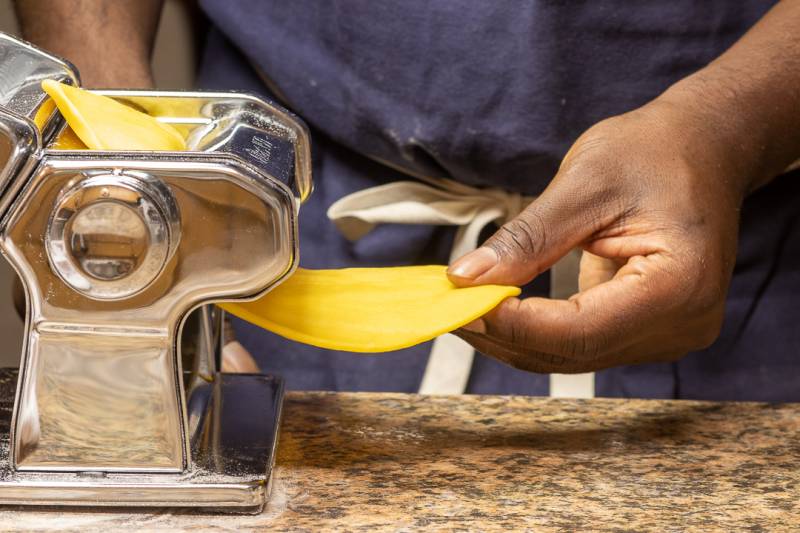
When I make this pasta dish at the Materials+Methods pop-up, I start by giving a demonstration on how to make fresh pasta. The demonstration is prelude to sharing my story of how transitioned from away my research science career towards becoming a chef. This dish explores my connection6 with eggs and cheese7 and is a platform to stack additional layers of depth.
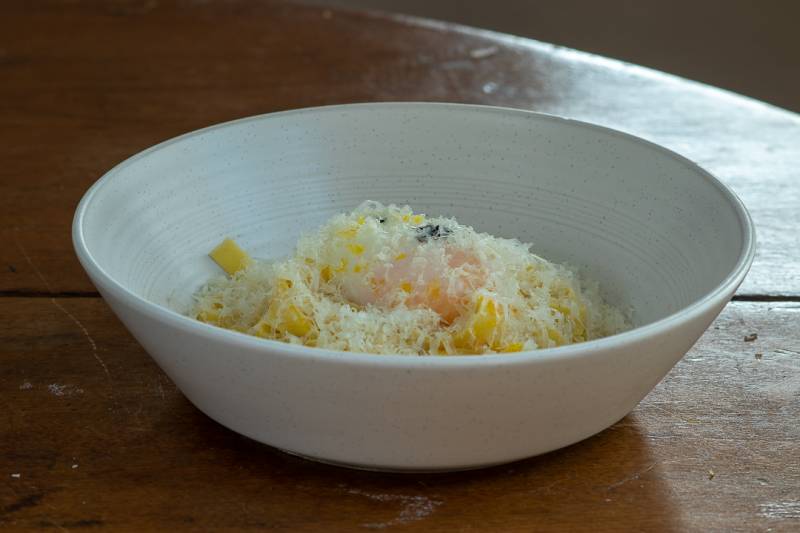
Fettuccinii8 hits a nice sweet spot: Thin enough to twirl, but wide enough to carry the eggy sauce along for the ride. Woven throughout the dish is smoke flavor layered in the form of smoked egg yolks9, slow rendered bacon10, and charcoal-activated Cyprus flake salt. When grated over the pasta, the egg yolks and bacon supply a subtle umami-rich smoke flavor that enhances the pasta’s egg flavor.
